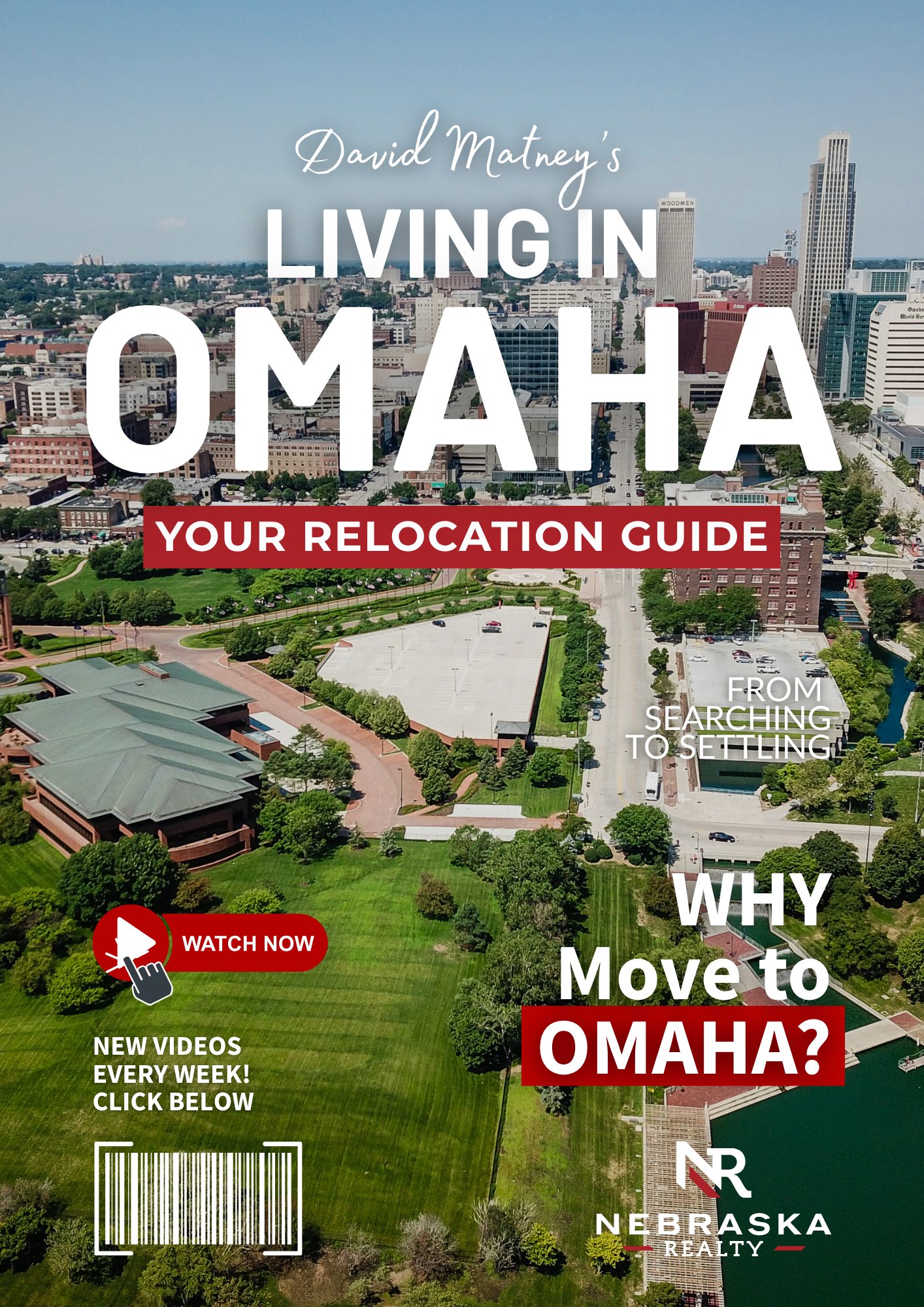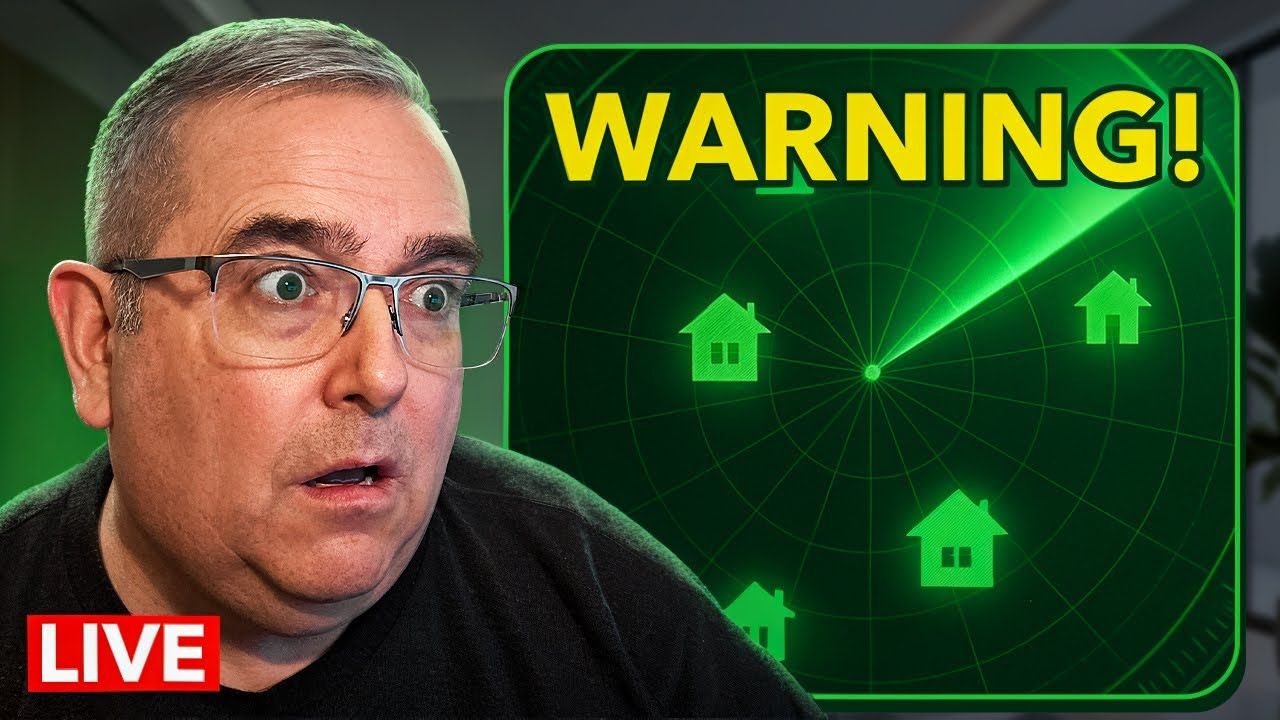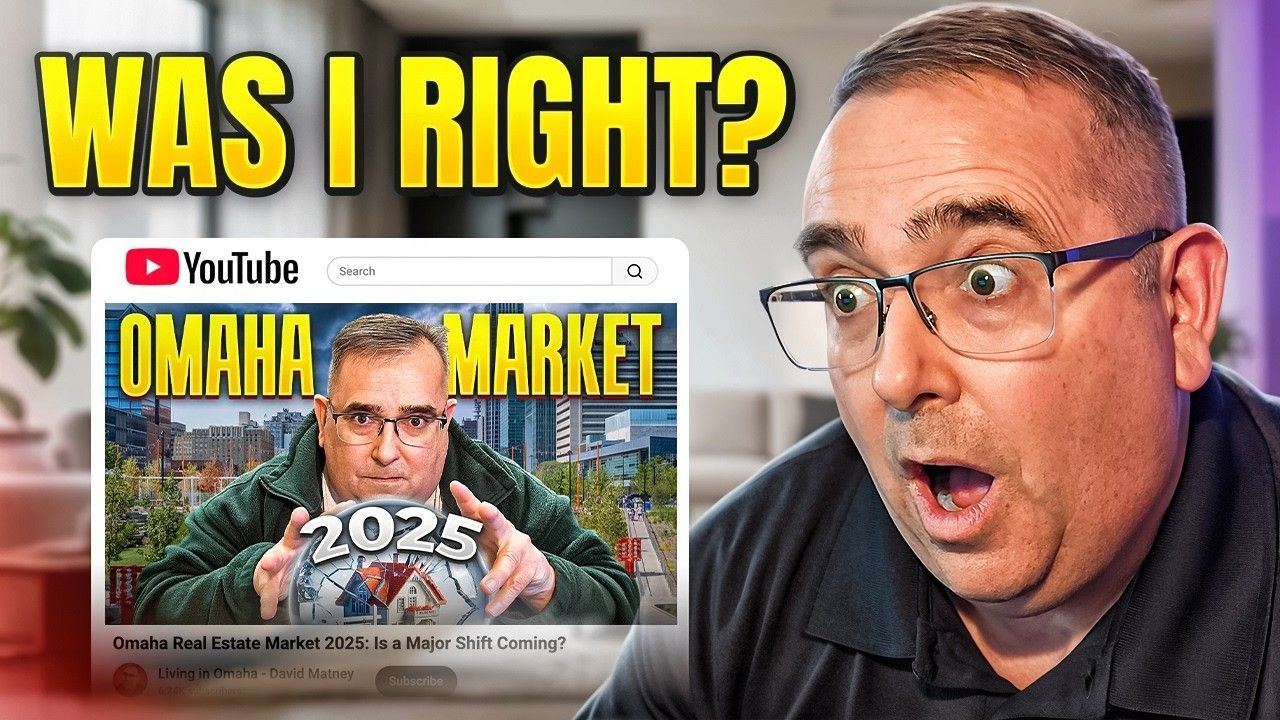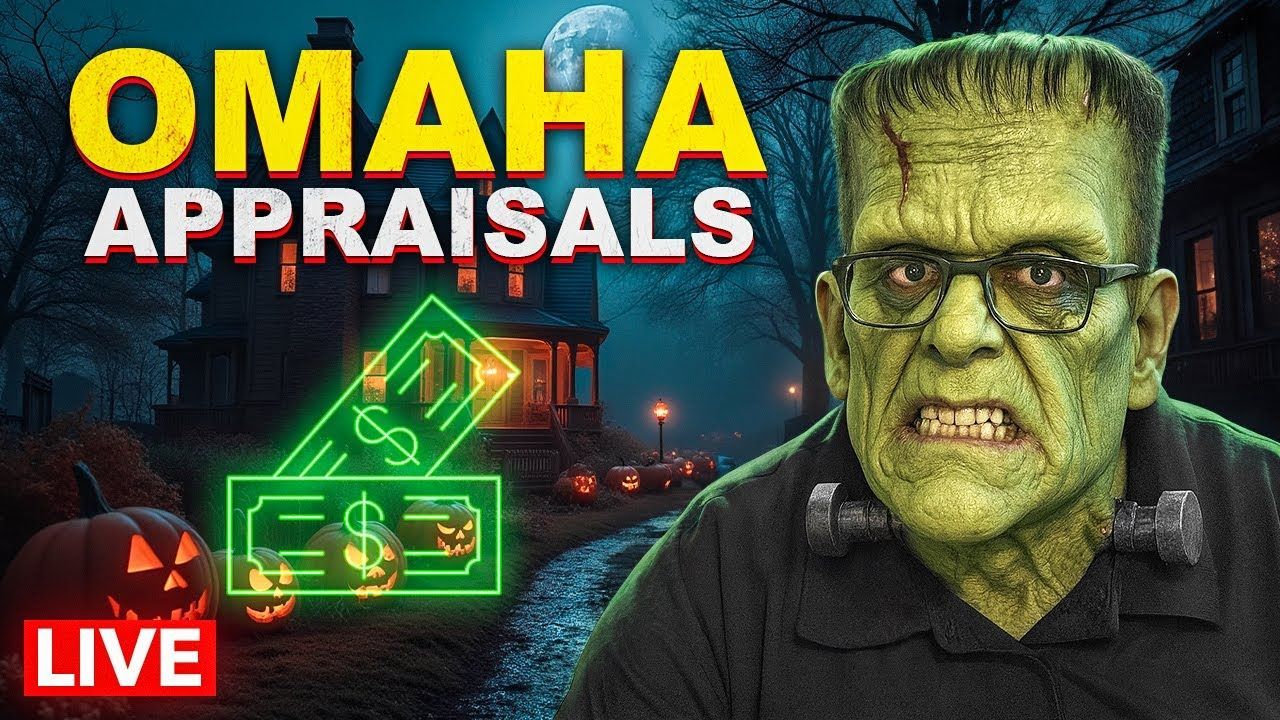Types of Homes to Avoid in Omaha, Nebraska — A Local Realtor’s Guide
Hi, I'm David Matney with Living in Omaha. If you’re moving to the area or buying your first home here, this article (and the accompanying video I created) will walk you through the most important pitfalls to avoid. In this deep-dive I explain the top 10 types of homes to avoid in Omaha, Nebraska, why each one can be risky, and exactly what inspections, questions, and strategies you should use to protect your money and your peace of mind.
Table of Contents
- Introduction: Why I Focus on the Types of Homes to Avoid in Omaha, Nebraska
- TOP 10 Types of Homes to Avoid in Omaha, Nebraska
- Inspections, Timing, and Strategic Sequencing
- Insurance: ACV vs Replacement and Roof/hail Protocol
- Special Local Topics: Radon, ASARCO, Papio Watershed, and Flood Control
- Investor Advice: Rules, Disclosures, and Property Management
- Checklists: Walk-through and Negotiation Checklists
- FAQs About The Types Homes to Avoid in Omaha, Nebraska
- Final Thoughts — How to Apply This Guidance
- Closing: Be Thorough, Ask Questions, and Use Professionals
Introduction: Why I Focus on the Types of Homes to Avoid in Omaha, Nebraska
Buying a home is exciting — and expensive. As a local realtor with two decades of experience, I’ve watched buyers make the same costly mistakes over and over. That’s why I created this guide to the types of homes to avoid in Omaha, Nebraska. My goal is to help you make a confident, informed purchase whether you’re relocating from another state or upgrading within the metro area.
Throughout this article I’ll explain practical red flags, local quirks (like radon and the ASARCO lead Superfund zone), inspection priorities, insurance pitfalls, and negotiation strategies. I’ll also show you screenshots from my video at key moments so you can visually follow along.
VIEW HOMES FOR SALE IN OMAHA, NEBRASKA
TOP 10 Types of Homes to Avoid in Omaha, Nebraska
Below are the ten categories I recommend buyers approach with caution (or avoid entirely) when considering homes in the Omaha metro. For each, I’ll explain the issue, how to identify it, the financial risk, and what to do if you still want to proceed.
1) Homes on or Backing to a Busy Street
Homes that are directly on or back up to a busy street are one of the most common mistakes I see. It’s easy to rationalize that a two-lane road is fine now — but think about resale value and changing city patterns. The phrase "types of homes to avoid in Omaha, Nebraska" specifically includes homes adjacent to growing roadways for good reason: traffic increases, noise intensifies, and curb appeal diminishes over time.

Why it matters:
- Noise: constant traffic noise reduces livability, interrupts sleep, and makes outdoor spaces less appealing.
- Future expansion: what’s a small road today can be widened to a four-lane boulevard with heavier traffic in 7–10 years.
- Resale impact: homes with busy streets behind them consistently sell for less and can take longer to sell.
What to check:
- Look at city and county transportation plans — they often indicate future road expansions.
- Visualize the yard in all seasons. Sellers often list properties when leaves block an eyesore; you need to picture the property with no leaves on the trees.
- Do a noise test: visit the property at varying times (morning rush, midday, evening rush, late night).
If a busy street is a deal-breaker, walk away. If it’s tolerable but not ideal, secure a lower purchase price proportional to the perceived long-term impact and be prepared to price competitively when you sell.
2) Flipped Properties (Use Caution)
Not all flips are bad, but flips require extra diligence. The Metro market in Omaha has many investors and flippers who do quality work — and some who take shortcuts. For that reason, "types of homes to avoid in Omaha, Nebraska" often includes careless flips that cut corners on permits, inspections, and long-term systems.
Red flags to spot:
- No permits pulled: use online permit lookup tools (e.g., local city permit sites). If permits weren’t pulled, ask why.
- New finishes, old systems: shiny countertops and paint with a 20–30 year-old furnace, old windows, or a decades-old roof.
- Seller history: check the seller property condition disclosure and the ownership timeline in the MLS and county assessor records — short ownership periods often indicate flips.
- No contractor list: if the seller won’t provide contractors who did the work, treat that as a red flag.
Why permits matter:
Permits ensure that the work was inspected and completed to code. If an electrical job was done without a permit and later causes a fire, your insurance company may investigate and deny coverage if the work wasn’t permitted. That can turn a "cheap flip" into a catastrophic expense.
Visit www.omahapermits.com to see if a permit has been pulled on that specific property.
How to proceed safely with a flip:
- Do a full inspection and ask targeted questions about major systems (roof, HVAC, plumbing, electrical).
- Ask for receipts, contractor names, and permit numbers. Verify them with the jurisdiction that issued permits.
- If you love the cosmetic upgrades but suspect deeper issues, negotiate a lower price to account for potential unknowns or require the seller to complete specific repairs with permits pulled prior to closing.
- Have your agent check the address history at www.gprmls.com .
3) Homes With Major Structural Issues and Require Radon, Sewer, and Specialized Inspections
Major structural problems are among the most expensive and stressful repairs. If a home shows signs of foundation movement, bowed basement walls, or hydrostatic pressure, you should either walk away or demand a thorough structural assessment. This category is a clear part of the "types of homes to avoid in Omaha, Nebraska" list because foundation work rarely pays off for buyers unless they have deep pockets and a long-term investment plan.
What to watch for during a showing:
- Basement smells and visible water staining — musty odors often indicate past or present water intrusion.
- Cracks: vertical hairline cracks are common; horizontal cracks or shifting slabs indicate movement and possible failure.
- Doors and windows sticking — can indicate settlement or structural shift.
- Expansive cracks between foundation and slab — look for movement between concrete slabs.
Inspections and next steps:
- Order a structural engineer inspection if there are red flags. This is a specialized inspection beyond a general home inspection.
- Get quotes from reputable basement waterproofing and foundation repair contractors; treatment can range from minor epoxy injections to expensive underpinning or wall replacement.
- Understand the timeline for work. Structural repairs can delay closings and may require permits and engineering approvals.
Bottom line: don’t buy a home with major structural issues unless you fully understand the scope and cost of repairs and deliberately plan to take on a project property.
Inspections are the buyer’s best friend. In Omaha, there are three tests I consider essential in many situations: radon testing, sewer scope, and system-specific inspections (furnace/AC/roof). When you’re studying the types of homes to avoid in Omaha, Nebraska, remember that a seemingly great house can hide expensive surprises that these inspections reveal.

Radon:
- Eastern Nebraska is known for high radon levels. Radon is a colorless, odorless radioactive gas and the second leading cause of lung cancer.
- Testing costs roughly $150–$200 and takes several days. If levels are high, mitigation systems typically run $1,500–$2,000 and reduce radon to acceptable levels.
Sewer scope:
- A sewer scope typically costs about $250 and is one of the best values in home inspections. A camera sent down the main sewer line reveals blockages, root intrusion, clay pipe issues, and other costly problems.
- As a homeowner you’re responsible for the sewer line from your house to the connection point in the street — replacing a main sewer line can cost around $20,000.
- Strategy: Do the sewer scope first during your inspection window. If it fails, bail early and save the full-home inspection cost.
System-specific inspections:
- If the furnace, HVAC, or roof is old, have those systems inspected by licensed professionals. That helps estimate replacement cost and timing so you can plan budget and negotiations.
When you account for these tests you’re far less likely to buy a home that becomes an ugly financial surprise. These are core components of the types of homes to avoid in Omaha, Nebraska discussion because a home with unknown sewer issues or dangerously high radon might be a home to avoid unless properly mitigated.
4) Homes That Require Flood Insurance
If a property is in a floodplain and requires flood insurance, treat it as a major red flag. Flood insurance premiums can be steep, flood maps change over time, and heavy local storms can fill creeks and drainage systems quickly. One of the key "types of homes to avoid in Omaha, Nebraska" categories includes any property that requires flood insurance unless you’re fully aware of the costs and the degree of risk.

Local context:
- Omaha and surrounding areas have lakes and engineered basins tied to managing the Papio Creek watershed. These are helpful for flood control but also indicate areas prone to runoff.
- As the city expands westward, new retention basins and lakes appear — a sign of developers trying to manage flood risks in growing neighborhoods.
What to do after you go under contract:
- Call your insurance agent immediately to confirm whether the property requires flood insurance, how much the premium will be, and what coverage is available.
- Ask sellers for any historical flood claims and verify elevation certificates if available.
- Consider buying private market flood insurance or working with an agent experienced in high-risk areas.
My recommendation: avoid homes that require flood insurance unless you have a compelling reason and have fully budgeted the premium and potential flood risk.
5) Conversion Duplexes (Homes Converted Into Two Units)
Conversion duplexes — single-family homes chopped into two rental units — are a special case. I’ve owned one, and I’ll tell you bluntly: they can be a giant mistake unless you know exactly what you’re buying. Conversion duplexes make the "types of homes to avoid in Omaha, Nebraska" list because they often combine the downsides of older systems with a poor layout and rental market challenges.
Problems to expect:
- Older systems: most conversions are done to older homes, which means the foundation, wiring, and plumbing may all be aged or patched.
- Bad layouts: you’ll often get weird room configurations, shared entrances, and awkward units that don’t appeal to stable renters.
- Tenant quality and turnover: conversion duplexes tend to attract transitional renters, which can lead to higher vacancy and maintenance turnover.
- Permits and legality: was the conversion done with permits? If not, you could face fines or expensive retrofitting to comply with existing codes.
If you’re considering a conversion duplex as an investor:
- Run detailed cashflow analysis with conservative occupancy rates.
- Check local zoning and permits for legality. Make sure the units meet code for fire separation and egress.
- Consider the target renter market: are there tenants who want such an awkward layout? If not, vacancy will hurt your returns.
- Use a property management company familiar with local landlord-tenant law to stay out of legal trouble.
Bottom line: I generally advise avoiding conversion duplexes unless you’re an experienced investor prepared to rehab properly and absorb potential vacancies.
6) Homes in the ASARCO Lead Superfund Area
This is a uniquely local concern and a central piece of the types of homes to avoid in Omaha, Nebraska conversation. The ASARCO lead plant contaminated large parts of North Omaha over the better part of a century. The result is the largest lead Superfund site in the country. The EPA has worked on cleanup since 1998, and about 13,000 residential properties have been part of the process.

What buyers need to know:
- If you buy in the Superfund area you’ll sign disclosures acknowledging the zone.
- Check the Omaha Lead Registry (omahalead.org) to see what tests and remediation have been completed on any property.
- Soil tests and replacement work have been common — if high lead levels were found, the contaminated soil may have been removed and replaced.
- If you buy properties built before 1978 or investment properties there, be meticulous about lead-based paint disclosure requirements — failing to disclose can cause large fines and lawsuits from federal or state agencies.
My personal experience: I once owned a conversion duplex in the Superfund area. While remediation efforts were thorough, dealing with the regulatory oversight and required disclosures added complexity and risk. If you’re not prepared to navigate the related regulations and buyer disclosure obligations, this is a zone to avoid.
7) Homes Over 100 Years Old (Buy Carefully)
Historic homes are beautiful and full of character, but they come with unique maintenance demands and code issues. Many homes in Omaha that are more than a century old contain lead paint, knob-and-tube wiring, clay sewer lines, and inefficient insulation. That’s why they often belong on the "types of homes to avoid in Omaha, Nebraska" list for buyers who aren’t prepared for restoration and ongoing maintenance.
Key considerations:
- Lead-based paint risk: mandatory disclosures and remediation costs can be high.
- Outdated systems: electrical, plumbing, and heating systems may require full replacement.
- Smaller modern conveniences: smaller closets, narrow driveways, detached garages, and awkward floor plans add daily friction.
- Less energy efficiency: older windows, lack of insulation, and inefficient HVAC will increase utility bills.
If you love a historic home:
- Budget at least 10–20% of the purchase price annually for maintenance and unexpected repairs (adjust based on actual inspection findings).
- Get specialized inspections (electrical, plumbing, structural) and historical renovation quotes before committing.
- Explore historic preservation incentives and local grants — sometimes cities offer aid for restoring historic properties.
8) Homes That Back to Train Tracks, Large Power Lines, or Other Negative Influences
Any negative external influence — train tracks, major transmission lines, commercial operations, apartment complexes, or industrial views — will affect resale value. These properties appear on lists of the types of homes to avoid in Omaha, Nebraska for a reason: buyers later face a narrower market and a price penalty when trying to sell.

Things to consider:
- Noise and vibration: trains bring noise at night and vibration that can loosen plaster and annoy residents.
- Visual impact: high-tension power lines and commercial buildings reduce curb appeal.
- Resale market: many buyers simply won’t consider these properties, so you’ll face a smaller pool of buyers when selling.
Pro tip: sellers may list these properties in fall or summer when leaves hide the negative view — always visualize the property in winter with no leaves on the trees.
9) Homes on Sloping Lots
Homes built on steep slopes can present serious challenges—especially when the slope directs water toward the house. In Nebraska, where spring and summer rains are common, proper grading around the home is essential. The ground should always slope away from the foundation to help keep water from pooling near the house.
In some neighborhoods, however, you’ll see backyards that slope toward the home. This means heavy rainfall naturally flows toward the foundation, creating ongoing pressure and potential water issues. Newer homes often come equipped with drain tile systems designed to divert water away, but older homes typically lack this feature. Without a proper system, all that excess water can build up around the foundation and increase the risk of leaks or damage.
To help prevent water from entering the basement, homeowners should focus on three key areas: keeping gutters clear, ensuring downspouts direct water away from the foundation, and maintaining proper grading around the property. If your home sits on a slope, an additional safeguard is having a “swale” in the backyard—a shallow channel designed to guide water away. Swales are often found between neighboring properties where the land naturally dips lower, and they play a big role in protecting foundations from water damage.
10) Former Model Homes
Former model homes can be tempting because they often include upgrades and upgraded finishes. But they also come with hidden downsides. When considering the types of homes to avoid in Omaha, Nebraska, former model homes deserve scrutiny because many are several years old, may not include a builder’s warranty, are often located on busy streets or near subdivision entrances, and may not come with aggressive price discounts despite the age.
Key issues:
- Age mismatch: these homes might be 2–3 years old — older than buyers expect for new construction.
- No warranty: builders typically reserve full warranties for new builds and may not transfer warranty coverage for those that served as models.
- Higher taxes: the house will have been fully assessed already, so property taxes are often at full assessed value immediately.
- Location: model homes were placed for visibility, so they’re usually on busier streets or nearer subdivision entrances.
What to ask:
- Is there any remaining builder warranty? If not, can the builder offer a limited warranty or credit for repairs?
- When was the model built and first occupied?
- Are there any special maintenance items due (e.g., HVAC manufacturer service, roof inspections) because models get lots of foot traffic and early wear?
Conclusion: Model homes can be great value if priced appropriately and if you understand whether a warranty transfers. Otherwise, you may be paying “new home” dollars for a house that’s already worn in.
Bonus: Condos: Watch the Association Financials and Rules
Condos made the bonus spot on my list because their risk profile depends heavily on the condo association’s financial health and rules. A condo with solid reserves and responsible boards is a great buy; one with low reserves, deferred maintenance, or restrictive rules can be a trap. So in the "types of homes to avoid in Omaha, Nebraska" conversation, condos deserve special caution — not because condos are inherently bad, but because many buyers skip the necessary financial due diligence.
What to review for condos:
- Financial statements: get a professional review of the association’s reserve study, balance sheet, and operating budget.
- Special assessments: ask about recent and upcoming special assessments. These one-time fees can be huge if a building needs major repairs.
- Rules and regulations: verify pet policies, rental restrictions, parking rules, and decoration rules — these might affect your lifestyle and rental potential.
- Insurance coverage: understand what the master policy covers versus your unit owner policy.
Investor-specific caution: many cities and states now require strict disclosure and procedures for renting out condo units. Make sure you can legally rent your unit if that’s part of your plan.
Inspections, Timing, and Strategic Sequencing
One recurring theme in all of the above is inspection timing. If you have inspection contingencies, be strategic: do inexpensive, high-impact tests first so you avoid wasting money on full-home inspections on properties that fail cheap tests.
Suggested sequencing:
- Title, zoning, and permit quick checks (ask your agent to run MLS history and assessor records).
- Sewer scope ($250) — cheap and can reveal deal-killers.
- Radon test ($150–$200) if your area is known for elevated radon levels.
- Roof and HVAC inspections (licensed contractors) for older systems.
- Full home inspection once the major items pass.
- Specialty inspections (structural engineer, pest, mold) if red flags appear.
Why this sequence helps:
Doing the sewer scope and radon first allows you to back out early if there’s a major, inexpensive-to-detect problem. If those pass, then commit to the more expensive full-home inspection. That saves money and preserves negotiating leverage.
Insurance: ACV vs Replacement and Roof/hail Protocol
Insurance is another detail where buyers often undershoot their due diligence. Understand the difference between ACV (Actual Cash Value) and replacement coverage. This can make a dramatic difference after a hail or storm event.
ACV (Actual Cash Value):
- Pays the depreciated value of an item. If your roof is older, the insurance payout will be reduced by depreciation.
- Example: a $20,000 roof replacement might result in an $8,000 payout with ACV — leaving you to pay the difference.
Replacement coverage:
- Covers the cost to replace the item up to policy limits (less your deductible).
- Example: a $20,000 roof replacement might require only your $1,000 deductible, with the insurer covering the rest.
Important protocol after suspected hail damage:
- Do not call your insurance company first. Call a reputable local roofer to evaluate damage and document it.
- A roofer can help emphasize damage during the insurance adjuster visit and sometimes meet the adjuster to ensure all hail damage is noted.
Insurance in Nebraska can be expensive due to severe weather patterns; always speak with an experienced local agent about coverage limits, deductibles, and endorsements for hail or flood.
Special Local Topics: Radon, ASARCO, Papio Watershed, and Flood Control
Several issues in Omaha are unique and deserve emphasis when thinking about the types of homes to avoid in Omaha, Nebraska.
Radon:
Eastern Nebraska has some of the highest radon levels in the country. Testing during your inspection window is cheap and effective. If high levels are found, mitigation is usually straightforward and affordable in the $1,500–$2,000 range.
ASARCO lead Superfund area:
This is a long-term EPA cleanup zone with a checkered past. If you’re buying near North Omaha’s redevelopment — beautiful historic neighborhoods now revitalized near the riverfront and museums — verify the lead mitigation history. Use the Omaha Lead Registry to research test results and remediation work.
Papio watershed and flood control:
Retention basins, lakes, and detention ponds are signs that flooding was a planning consideration. If a property sits in a floodplain or near a creek that rises quickly after storms, be cautious — flood insurance costs and the frequency of claims can eat your budget and complicate resale.
Investor Advice: Rules, Disclosures, and Property Management
If you’re buying investment properties in Omaha, particularly in the ASARCO zone or properties built before 1978, you must follow lead disclosure rules and local rental regulations. I recommend partnering with an experienced property management company — not only for hands-on management but for compliance support. Investors frequently underestimate the legal and regulatory complexity, and I’ve said this before: if you’re an investor, it’s not if you’ll be sued — it’s when. Proper documentation, inspections, disclosures, and insurance are non-negotiable.
Checklists: Walk-through and Negotiation Checklists
Here are two practical checklists you can use during showings and post-offer negotiations. Keep them saved on your phone for on-site reference.
Showing Checklist (Quick Look)
- Does the property back to a busy street, commercial property, power lines, or train tracks?
- Are there signs of water intrusion or musty smells in the basement?
- How old do the roof, furnace, and windows appear?
- Is the yard grading sloped toward the foundation?
- Are there visible cracks in foundation walls or steps?
- Does the seller appear to have owned the property a short time (possible flip)?
Post-offer Inspection Priority Checklist
- Order sewer scope first ($250).
- Order radon test ($150–$200) if area warrants it.
- Schedule full-home inspection if the above pass.
- Schedule specialty inspections (structural, HVAC, electrical) if red flags arise.
- Get multiple contractor quotes for any required work before negotiating credits or repairs.
FAQs About The Types Homes to Avoid in Omaha, Nebraska
What are the single most important types of homes to avoid in Omaha, Nebraska?
Properties that back to busy streets or other negative influences, homes in floodplains requiring flood insurance, and houses with major structural issues. Also be cautious with flips, conversion duplexes, and properties in the ASARCO Superfund zone if you’re not prepared for the added complexity.
How much does a sewer scope cost and why is it recommended first?
A sewer scope typically costs around $250. It’s recommended first because it’s inexpensive relative to discovery value and can reveal major problems like tree-root intrusion or clay pipe failure that can cost tens of thousands to repair.
Should I always test for radon in Omaha?
Yes. Eastern Nebraska has many areas with high radon. Test during your inspection window; mitigation is generally affordable compared to the health and resale risks of leaving radon unchecked.
If a home was a flip, how can I tell if the work was done properly?
Ask for permit numbers and contractor details, check local permit records, have a full home inspection, and obtain quotes from independent contractors for major systems. If the seller refuses to provide documentation, treat it as a red flag.
Are condos a bad investment in Omaha?
Not inherently. Condos can be great if the association is financially healthy and has adequate reserves. Always review financials and the reserve study, and ask about any past or planned special assessments.
What should I ask my insurance agent about a property I’m under contract on?
Ask whether flood insurance is required, whether the policy is ACV or replacement-cost based, what hail and wind coverage looks like, and whether there are endorsements or exclusions that impact major systems like the roof.
Final Thoughts — How to Apply This Guidance
My hope is that by outlining the most common types of homes to avoid in Omaha, Nebraska and by giving you concrete tests, questions, and negotiation strategies, you’ll feel more confident in your next home purchase. Buying a home is as much about avoiding bad choices as it is about finding a great one. If you follow the inspection sequencing advice, verify permits, watch for major systems' age, and understand local nuisances (radon, ASARCO, floodplains), you’ll dramatically reduce the odds of making a costly mistake.
If you’re relocating to Omaha or need help navigating the market, my contact information is available in the video description and on my Living in Omaha site. I work with buyers and investors every week and can connect you with trusted inspectors, radon testers, sewer scope plumbers, and roofing contractors so you make a safe, informed purchase.
Closing: Be Thorough, Ask Questions, and Use Professionals
Remember, the phrase “types of homes to avoid in Omaha, Nebraska” is not meant to scare you away from buying here. Omaha is a great place to live — with wonderful neighborhoods, strong schools, and a friendly community. My intent is simply to help you steer clear of the kinds of properties that often create regret and unexpected expenses for buyers. Be curious, hire professionals, use the inspection period wisely, and don’t be afraid to walk away if the numbers don’t make sense.
And if you’d like personal help evaluating a house you’re considering in Omaha, give me a call or text at 402-490-6771 or visit www.livinginomaha.com — I’ll walk you through what to inspect, what to ask the seller, and how to negotiate repairs or credits so your purchase is as safe as possible!
DAVID MATNEY
David Matney is a trusted Realtor® and local expert with over 20 years of experience in Omaha’s real estate market.













